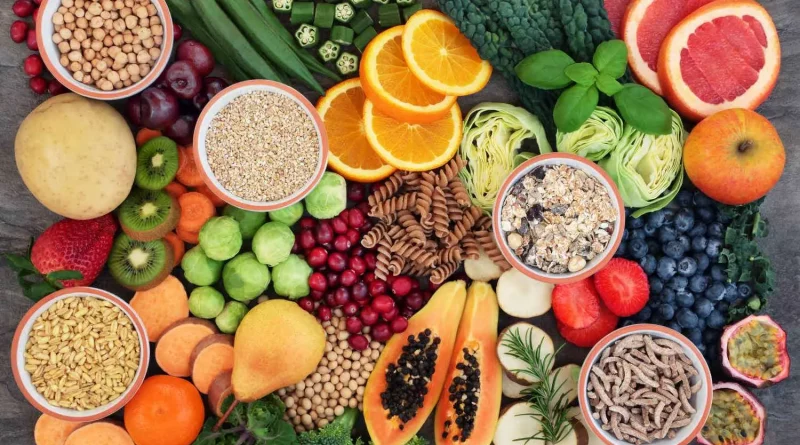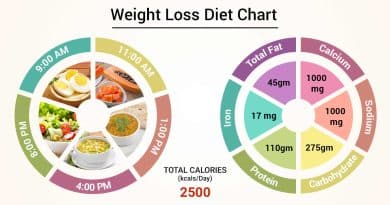Cultured, Whole Food Vitamins and Supplements – Best Source of Dietary Supplementation
Whole foods are our best source of nutrition and provide the most complete sources of vitamins and minerals. We are nourished by eating whole foods because they contain the necessary proteins, fats, carbohydrates, fiber, enzymes, vitamins, minerals, antioxidants, and other micronutrients that our body needs for proper nourishment and optimal health.
Unfortunately, most of us do not eat enough variety of whole, nutrient-dense foods for proper nutrition levels. Instead, our modern diets include too many processed foods that provide sub-standard levels of nutrients. These days, dietary supplementation is often needed to provide our nutritional requirements for optimum health and energy.
The Complexity of Whole Food Vitamins and Dietary Supplements
Dietary supplements and vitamins made from whole foods contain not only recognized vitamins and minerals but a whole symphony of other micronutrients (phytonutrients or phytochemicals) that work in concert with vitamins and minerals to orchestrate a natural harmony in our bodies. More than 25,000 different micronutrients, also known as cofactors, have been discovered in whole fruits and vegetables alone.
These micronutrients are still being studied, but what we do know is that they not only provide additional nutritional support but also enhance the effectiveness and absorption of other nutrients contained in whole foods.
An interesting study was conducted by researchers at the USDA’s Jean Mayer Human Nutrition Research Center on Aging at Tufts University in Boston. Two different age groups of men and women were fed a diet containing ten servings of fruits and vegetables a day. Then they measured the ‘antioxidant capacity’ of the participants’ blood samples by seeing how well the blood deactivated damaging oxidized free radicals in a test tube.
After two weeks, the antioxidant capacity of the participants’ blood rose in both groups, though more consistently in the older people. Based on this and other studies, it appears that compounds other than vitamins C and E and carotenoids contribute a major portion of the increase in antioxidant capacity.
Food researcher Vic Shayne, Ph.D. clearly describes the complexity of whole food nutrition and how this cannot be duplicated in the lab with vitamin isolates, in the following quotation:
Since whole food ingredients are natural, they contain a host of nutrients that exist within a complex.
A food complex includes not only vitamins and minerals but also many cofactors (helper nutrients) that are found in nature’s foods as a result of the evolutionary process.
Cofactors and food complexes therefore cannot be made in a laboratory nor can they be duplicated by scientists.
Many nutritional doctors and researchers conclude that cofactors are often more valuable than vitamins and minerals, and that food cannot be duplicated due to its complexity, dynamism, and energy.
Cofactors within nature’s foods (which are found also in whole food supplements) include, but are not limited to: vitamins, minerals, terpenes, trace mineral activators, enzymes, co-enzymes, chlorophyll, lipids, essential fatty acids, fiber, carotenoids, antioxidants, flavonoids, pigments, amino acids, whole proteins and more.
The human organism is biologically suited to ingest and utilize nature’s whole foods for its sustenance, including the optimal functioning of cells, and the processes of healing and prevention.
Because (isolated) vitamin and mineral pills are merely comprised of isolated chemicals, the body often regards these as foreign invaders.
Many vitamins, minerals, and amino acids produce toxic side effects ranging from skin itching and flushing (niacin, for example) to liver impairment (vitamin A palmitate, for example).
The ingredients within foods operate on a system of synergism; in other words, they work as ‘teams’ to feed cells. The interwoven, interrelated, and complementary functions of food particles represent some of Nature’s most wonderful properties of synergistic power and function.
Synergism is defined as the interaction of two or more agents or forces so that their combined effect is greater than the sum of their individual effects: working together.
The Power of Fermentation and Probiotic Cultures
We understand that dietary supplements created from whole foods provide a more complex source of nutrition than isolated supplements created in a lab. So, what happens when we incorporate a probiotic fermentation process into whole food’s nutritional ingredients?
I am sure we have all heard of Captain Cook’s remedy for scurvy on his ships. Due to the lack of fresh produce on long voyages, he would require all his sailors to eat sauerkraut, which is fermented cabbage. Scurvy is caused by a vitamin C deficiency; by fermenting cabbage, the Vitamin C levels of the cabbage are increased.
The power of the fermentation and culturing process is due to the additional nutrients that are created by the activated bacteria. By culturing live, whole foods in probiotics (healthy, beneficial, naturally occurring bacteria), a synergy of health-promoting compounds is created. Those compounds produce much greater results than the sum of the individual whole-food nutritional ingredients.
According to Dr. Richard Sarnat, M.D., co-author of “The Life Bridge: The Way to Longevity with Probiotic Nutrients,” “These (cultured) nutrients promote the health of the entire digestive system. It’s the process of fermentation that unlocks all these wonderful nutrients.”
In her book, “Nourishing Traditions,” author Sally Fallon, further explains the benefits of the Lacto-fermentation process: “Like the fermentation of dairy products, preservation of vegetables and fruits by the process of Lacto-fermentation has numerous advantages beyond those of simple preservation. The proliferation of lactobacilli (probiotics) in fermented vegetables enhances their digestibility and increases vitamin levels.
These beneficial organisms produce numerous helpful enzymes as well as antibiotic and anticarcinogenic substances. Their main by-product, lactic acid, not only keeps vegetables and fruits in a state of perfect preservation but also promotes the growth of healthy flora throughout the intestine.”
Summary
By supplementing our diets with cultured, whole-food vitamins and supplements, we can provide our bodies with the complexity of nutrients missing from our modern diets, delivered in a cultured, whole-food form that our bodies recognize and utilize efficiently. Nutrients from isolated vitamins and supplements are not adequate for our dietary requirements because they lack the cofactors and micronutrients needed and are not recognized by our bodies as food.
As a Clinical Nutritionist, I recommend my clients and customers eat whole food, a natural diet, and use cultured, whole-food vitamins and dietary supplements for optimal health. I am impressed with nutrition companies such as Garden of Life, Mt. Capra, and New Chapter because they follow these health-promoting principles of using only whole food ingredients and a culturing probiotic process in their vitamin and supplement formulas.
References:
Dr. Richard Sarnat, Paul Schulick, and Thomas M. Newmark, “The Life Bridge: The Way to Longevity with Probiotic Nutrients,”
Jordan Rubin N.D, J. Brasco M.D., “Restoring Your Digestive Health”
[http://www.westonaprice.org/foodfeatures/lacto.html]
Sally Fallon, “Nourishing Traditions”
http://en.wikipedia.org/wiki/Whole_food_supplements
http://findarticles.com/p/articles/mi_m0NAH/is_4_34/ai_114783531, Cooking culture: tangy, tasty, and teeming with health benefits, fermented foods are the new stars of a wholesome diet – Healthy Appetites – Natural Health, April 2004, Jill Newmark
http://findarticles.com/p/articles/mi_m0FKA/is_6_63/ai_78476943 Better Nutrition, June 2001, Marie Moneysmith




